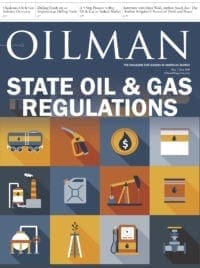Why the Oil & Gas Industry Must Protect Their Assets from Mother Nature

Failure to prepare for extreme weather events could cost the U.S. up to $1.2 trillion through 2050, according to The U.S. Global Change Research Program. The costs of preparing for these weather threats are significantly less than unexpected emergency repairs and recovery.
Despite the need to protect our equipment, many organizations fail to leverage the latest advancements in equipment sheltering to maximize protection against natural and man-made disasters. Here is a factor to consider:
Equipment Shelters
Meteorologists classify severe weather as any type of weather that creates a risk to life or property or that requires authorities to intervene on the public’s behalf. Extreme weather describes those weather events that fall outside the norm for a given geographic region. For those working in the critical oil and natural gas industries that serve our nation’s infrastructure, being prepared for both severe and extreme weather conditions can safeguard lives and save millions of dollars in recovery after a weather event.
It doesn’t matter whether you are an engineer who works in midstream or downstream applications working on a SCADA building, odorizer building, a gas regulator station, or metering and analyzer buildings; equipment shelters can protect pumps or valves, gas chromatographs, flare stacks, LACT or telecom equipment. Every engineer in the field needs to be concerned with protecting their equipment and processes from the ravages of Mother Nature.
Even if your field equipment is operating in the areas of usually mild temperatures, such as the deep South, there can often be extreme weather events, including hurricanes that can disrupt the smooth operation of your equipment.
It’s not just the weather itself, although that needs to be a consideration. There are specific elements of the weather that need to be mitigated when considering proper equipment protection. Here are some things to consider for the proper functioning of your processes:
Wind Load and Flying Debris
Hurricanes, tornadoes, cyclones, or dust storms might threaten field equipment and oil and natural gas processes in operation. Engineers need to provide structural protection against wind events that are typical to a given region. If the field equipment is in the Midwest, the structure should be engineered to forestall the ravages of a tornado. If the field equipment is along the Gulf of Mexico, an engineer might want a structure rated to withstand hurricane-force winds. In situations such as these, it is not only the prevailing winds that need to be accounted for; it is the flying debris that can be most problematic. Therefore, any structure needs to be engineered to handle debris picked up by such winds that could slam into the building guarding the equipment.
Snow Loads
While most people may think only about the wind associated with winter blizzards, the bigger issue for equipment protection really lies in the weight of snow that stays long after the storm has passed. Is your roof constructed in such a way as to support heavy, wet snow loads for your particular area? The snow load in Florida is nonexistent, while in Chicago or Denver, it will be much higher. Snow loads are independent of live loads, and a ground snow load of 50 psf may actually equate to a real snow load of 35-40 psf because there is an assumption that some snow will slide or blow off the rooftop.
Freezing Temperatures
Frozen gas pipes can be disastrous to any community, causing damaging gas leaks and loss of service. If your equipment operates in the chillier parts of the globe, you’ll probably need some sort of heating system to protect against frozen pipes, valves that freeze or fail to operate properly or simply extreme cold that might keep personnel from maintaining or operating equipment during severe cold weather. A shelter can protect workers from the deep freeze.
Ice Storm Damage
Aside from the obvious drop in temperature, the immediate danger in ice storms is from downed tree limbs and the destruction resulting from other frozen vegetation or downed power lines. Protective shelters can mitigate these risks. In some cases, there may be serious flooding after an ice storm due to sudden thawing, with large quantities of displaced water.
The Aftermath of Heavy Rainfall and Flooding
No engineer wants his equipment to rust prematurely, and a great deal of equipment is engineered to withstand normal rainfall amounts. But when that rainfall comes fast and furious and riverbanks overflow, field equipment shelters still need to protect. While most types of shelters can’t prevent the floodwaters from coming, engineers need to think about what the condition of the equipment and field equipment shelter will be in after the floodwaters recede.
Humidity, Mold and Mildew
While flood waters create temporary wet conditions, humidity is a long-term wet weather condition that can impact the proper functioning of field equipment. Will your field equipment shelter wilt when water fills the air? Mold, mildew and rot thrive in wet weather conditions, especially when heat is added to humidity as an additional weather factor.
Heat, Vents and Air Conditioning
If your field equipment operates in the desert, soaring temperatures can wreak havoc on your equipment. Depending on your particular conditions, fans or wind-powered ventilation systems may be enough, but if your processes are monitored or powered by sensitive computer equipment, you’ll want to have one or more air conditioning units mitigating those high temperatures.
Hail
Hail can cause considerable damage to critical field equipment and comes from thunderstorms that occur in areas where updrafts or downdrafts cause water molecules to freeze and solidify.
While most hailstorms produce small-sized hail, a 2003 storm in Aurora, Nebraska produced a hailstone that measured 7 inches in diameter and had a circumference of over 18 inches! Hailstones that size can definitely cause destruction or process interruption.
Which Type of Equipment Shelter Is Right For You?
Taken one at a time, each of these weather factors can be fairly easily managed, but planning to protect processes from all of these issues can be much more challenging. The choices for field equipment protection can vary, depending on what weather patterns need to be considered.
- Steel structures can handle heavy snow loads and hurricane-force winds, but they are subject to corrosion in wet weather, flooding or areas of high humidity. They could also be dented by a hailstorm or by flying debris. In addition, metal contracts and expands considerably in extreme heat or cold environments, which can weaken the protection these buildings are intended to provide.
- Wooden structures can protect equipment in many of these situations but will rot in prolonged exposure to wet conditions.
- Cement block buildings can also provide sturdy protection against many of these weather scenarios but will deteriorate over time, particularly in the wet, corrosive environments often created by oil and natural gas applications.
- Fiberglass shelters are a great alternative for these scenarios and for good reason. They are pound for pound stronger than steel but are impervious to prolonged, wet weather conditions. These low-maintenance structures can be engineered not only to mitigate or protect against all those weather events to ensure protection during the weather event but they will also ensure smooth operation after the event has passed.
Investing in the appropriate shelter designed to protect your equipment and personnel will help keep everyone safe and save you money in the long run. Nobody is immune from the perils of extreme weather. By putting plans in place, you’ll be in control when disaster strikes.
Tracy Switzer is the Founder and President of Shelter Works, a manufacturer of custom fiberglass enclosures and buildings designed to protect utility equipment. The company uses state-of-the-art technology and premium composite materials to deliver fiberglass buildings of unsurpassed quality, strength, and durability. These fiberglass buildings are put through independent lab testing to ensure they can withstand the most extreme conditions and perform for the long-term.






